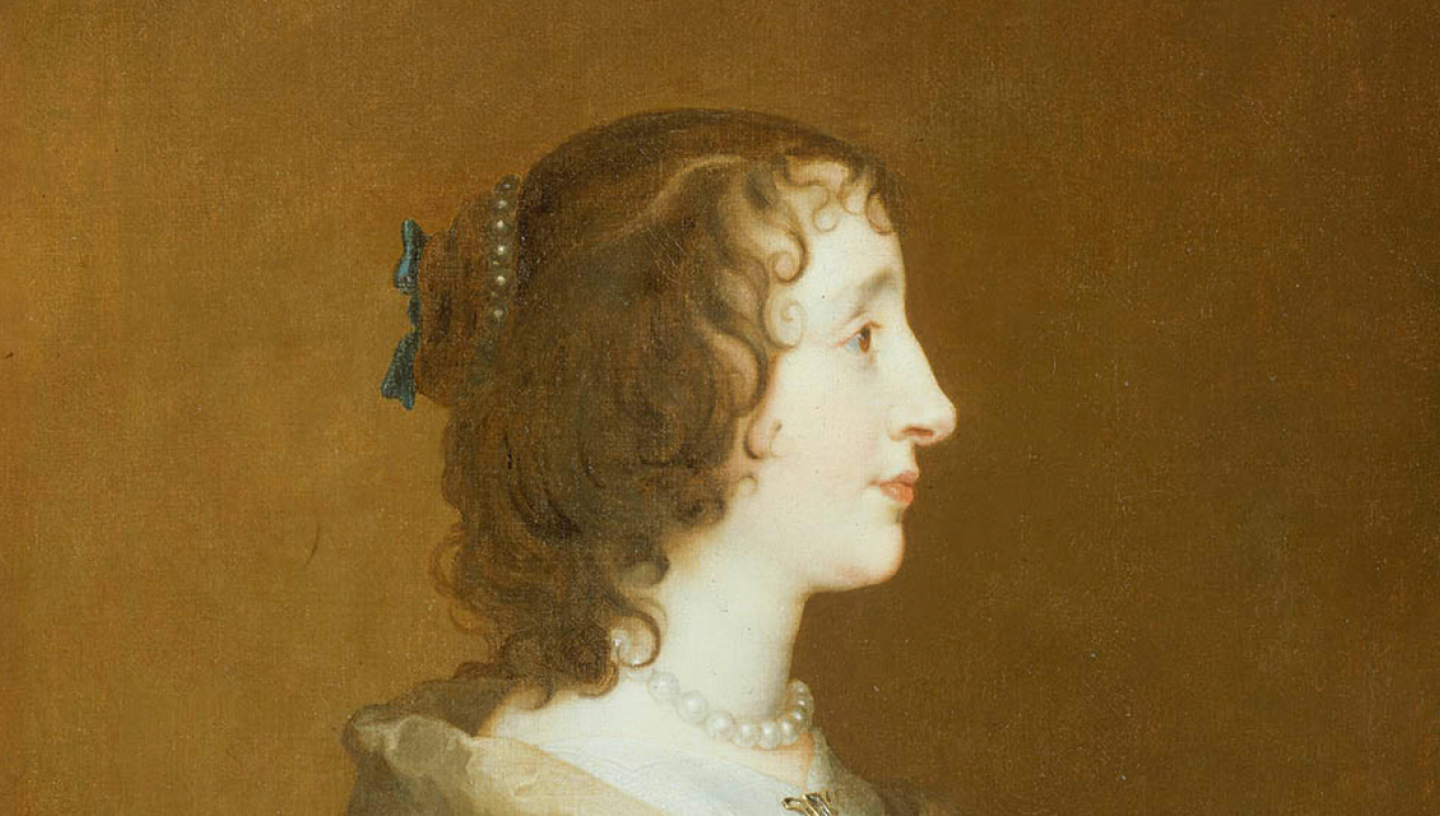
Wife to King Charles I and Queen consort of England, Scotland and Ireland, Henrietta Maria was a patron of the arts who oversaw Inigo Jones’s completion of the Queen’s House in 1635.
Who was Henrietta Maria of France?
Henrietta Maria of France met Charles I when he was travelling to Spain to discuss a future marriage to Maria Anna, Infanta of Spain. When this did not come to fruition, it was decided he would marry Henrietta Maria instead. They were married by proxy in 1625.
At first the couple did not get on, however as time went on their affections grew. Henrietta Maria had nine children, two of whom went on to be king – Charles II and James II.
Henrietta Maria’s interests included art, sculpture and design. She played a key role in the growth of masques, a type of courtly entertainment that revolved around elaborate costumes and sets. During her marriage to Charles I, the pair hosted a number of masques at the Queen’s House, with Henrietta Maria even featuring in many of them.
During the Civil War, Henrietta Maria moved to France for safety, and it was from here, in 1649 that she heard of her husband’s execution. She remained in France until the Restoration, when her son Charles II regained his position as King of England in 1660.
Upon her return to England she briefly lived in the Queen’s House from 1662-1663 becoming the last queen to have lived there.
In the summer of 1665 she contracted a bout of the plague, and returned to France, where she died in 1669.
Henrietta Maria's arrival in England
Although it was decreed by Charles that his wife be known as Queen Mary, she didn’t like this title and signed her letters ‘Henrietta R’ instead. She spoke little English when she came to England. This combined with her Catholicism meant that she was not well liked in England and she was even referred to as 'the popish brat of France.'
Upon her arrival in England, Henrietta Maria brought with her a large number of expensive possessions, and a number of courtiers from Paris. Charles eventually expelled them from court, claiming they were to blame for the poor start to his marriage, as well as attempting to control Henrietta Maria’s extravagant spending.
Henrietta Maria facts
- The US state of Maryland was named in her honour by Charles I.
- She never had a coronation – as a Catholic she was not allowed to be crowned in an Anglican church, and even had to watch her husband’s coronation from a distance.
- Upon her return to France in 1665 she founded a convent in Chaillot, where she spent much of the last years of her life.
Van Dyck and Henrietta Maria
Leading court painter Sir Anthony van Dyck painted a famous triple portrait of Charles I, showing his head in three positions. This was sent to Rome where the sculptor, Gianlorenzo Bernini, used it to create an equally celebrated marble bust.
Henrietta Maria then wished to commission a companion bust of herself - despite Bernini's unwillingness to do it - and three heads on separate canvases were finished by van Dyck for the purpose in 1639, although the bust was never made.
The studio version from this right profile is on display in the Queen’s House.
